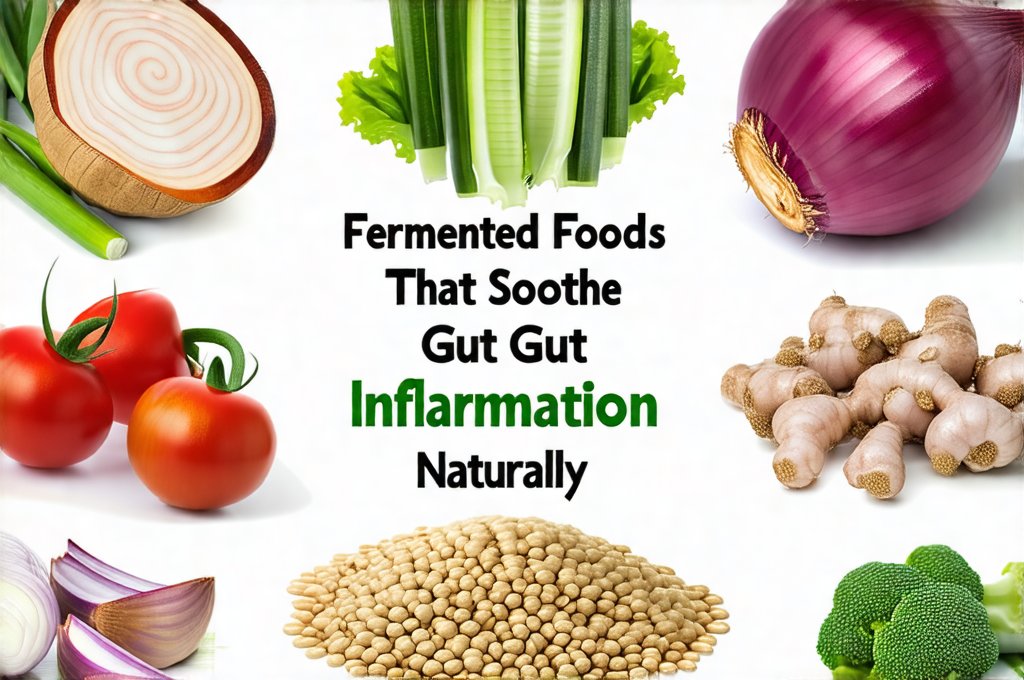The intricate relationship between our diet and gut health is becoming increasingly recognized as fundamental to overall well-being. For decades, conventional wisdom often focused on sterile digestive systems, but we now understand that the gut is a thriving ecosystem populated by trillions of microorganisms – bacteria, viruses, fungi, and others – collectively known as the gut microbiome. This microbial community plays a vital role in digestion, nutrient absorption, immune function, and even mental health. However, modern lifestyles—characterized by processed foods, antibiotic overuse, chronic stress, and limited fiber intake—have significantly disrupted this delicate balance, leading to a decline in microbial diversity and an increase in inflammation. Chronic gut inflammation is linked to a wide range of health issues, from digestive disorders like irritable bowel syndrome (IBS) and inflammatory bowel disease (IBD) to autoimmune diseases, allergies, and even mood disorders.
Fortunately, dietary interventions offer powerful tools for restoring gut health and reducing inflammation. While many focus on elimination diets or specific supplements, a particularly effective—and often overlooked—approach lies in incorporating fermented foods into our regular diet. Fermentation is an ancient food preservation technique that not only enhances flavor and nutritional value but also introduces beneficial microorganisms (probiotics) to the gut, fostering a more diverse and resilient microbiome. These probiotics contribute to improved digestion, reduced inflammation, and enhanced immune function, offering a natural pathway toward healing and restoring balance within our digestive systems. This isn’t just about adding kefir or kimchi; it’s understanding how these living foods can fundamentally shift your internal ecosystem for the better. If you are looking to best practices for introducing fermented foods after gut inflammation, it’s important to start slowly and listen to your body.
The Science Behind Fermented Foods & Gut Inflammation
Fermentation is essentially controlled microbial growth – we encourage specific bacteria to thrive in a food environment, transforming its composition and creating new compounds. This process often results in lactic acid fermentation, which gives many fermented foods their characteristic tangy flavor. But beyond taste, the real magic lies in the probiotics produced during this process. Probiotics aren’t just “good” bacteria; they are active agents that interact with our existing gut microbiome, influencing its composition and function. These live microorganisms can:
- Compete with harmful pathogens: Outcompeting undesirable microbes for resources and space, thus reducing their ability to cause inflammation.
- Strengthen the gut barrier: Improving the integrity of the intestinal lining, preventing “leaky gut” syndrome where undigested food particles and toxins enter the bloodstream, triggering an immune response.
- Produce short-chain fatty acids (SCFAs): SCFAs like butyrate are crucial for colon health, reducing inflammation and providing energy to cells in the gut lining.
- Modulate the immune system: Interacting with immune cells to regulate their activity and reduce chronic inflammation throughout the body.
The impact of fermented foods goes beyond simply introducing probiotics. The fermentation process itself often increases the bioavailability of nutrients in food, making them easier for our bodies to absorb. It can also break down anti-nutrients – compounds that hinder nutrient absorption – further enhancing nutritional value. This multifaceted approach makes fermented foods a potent tool for supporting gut health and reducing inflammation naturally. Understanding how processed foods trigger inflammation can help you make informed dietary choices.
Popular Fermented Foods & Their Benefits
There’s a wide variety of delicious fermented foods available, each with its unique profile of probiotics and benefits. Some commonly consumed options include:
- Yogurt: Especially those labeled “live and active cultures,” yogurt is a staple in many diets, offering calcium, protein, and beneficial bacteria. Choose plain, unsweetened varieties to avoid added sugars.
- Kefir: A fermented milk drink with a slightly tart flavor, kefir contains a wider range of probiotics than yogurt due to its fermentation process. It’s also lactose-free for some individuals.
- Sauerkraut: Fermented cabbage, sauerkraut is rich in fiber, vitamins C and K, and probiotics. Opt for raw, unpasteurized sauerkraut for maximum benefits.
- Kimchi: A Korean staple made from fermented vegetables (typically napa cabbage), kimchi offers a spicy and flavorful experience alongside its probiotic punch.
- Kombucha: Fermented tea, kombucha is bubbly and refreshing, though it contains some sugar. Look for low-sugar options or brew your own to control the sweetness.
- Miso: A fermented soybean paste used in Japanese cuisine, miso adds umami flavor to soups and sauces while providing probiotics and essential minerals.
- Tempeh: Another fermented soybean product, tempeh has a firm texture and nutty flavor, making it a versatile protein source.
Integrating these foods into your diet doesn’t have to be overwhelming. Start small – perhaps adding a tablespoon of sauerkraut to your salad or enjoying a cup of kefir with breakfast. Experiment with different options to find what you enjoy and incorporate them gradually for sustainable results. Remember that consistency is key; regular consumption is more beneficial than sporadic large servings. Consider incorporating foods that naturally detox the gut alongside these fermented options to further enhance digestive health.
Boosting Gut Health Through Fermented Foods: Practical Tips
Incorporating fermented foods into your diet can be surprisingly easy, but a few considerations will maximize their benefits. First, start slowly. Introducing too many probiotics at once can sometimes lead to temporary digestive upset (bloating, gas). Begin with small portions and gradually increase as your gut adjusts. Second, choose unpasteurized options whenever possible. Pasteurization kills beneficial bacteria, negating the probiotic effect. Look for labels that specifically state “live and active cultures” or “raw.” Third, variety is important. Different fermented foods contain different strains of probiotics, so diversifying your intake ensures a broader range of benefits.
Here’s how you can practically integrate these foods into meals:
- Breakfast: Add kefir to smoothies or enjoy yogurt with berries and granola.
- Lunch: Include sauerkraut or kimchi as a side dish with sandwiches or salads. Miso soup is also a great option.
- Dinner: Use tempeh in stir-fries, add miso paste to marinades, or serve fermented pickles alongside your meal.
- Snacks: Enjoy a small serving of yogurt or kefir between meals.
Addressing Potential Concerns & Considerations
While generally safe for most people, certain individuals may need to exercise caution when consuming fermented foods. Those with compromised immune systems should consult their healthcare provider before adding large amounts of probiotics to their diet. Similarly, individuals with histamine intolerance might experience symptoms like headaches or skin rashes from some fermented foods (particularly those aged longer). In these cases, starting with smaller portions and monitoring for reactions is crucial.
It’s also important to note that fermented does not always equal healthy. Some commercially produced fermented foods may contain added sugar, salt, or preservatives. Reading labels carefully and choosing minimally processed options is essential. Furthermore, the probiotic content can vary significantly between brands and batches, so selecting reputable sources is recommended. Finally, remember that fermented foods are just one piece of the puzzle when it comes to gut health. A balanced diet rich in fiber, regular exercise, stress management, and adequate sleep are all vital components of a thriving digestive system. To further support your microbiome, consider top daily habits that restore gut flora.
Beyond Consumption: Cultivating Your Own Fermented Foods
For those seeking even greater control over their probiotic intake and a deeper connection with their food, home fermentation is an incredibly rewarding option. Making your own sauerkraut, kimchi, or kombucha allows you to choose organic ingredients, customize flavors, and ensure the highest quality probiotics. The process itself isn’t complicated, but it requires some basic knowledge and attention to detail. Numerous resources – books, websites, and online communities – offer detailed instructions and guidance for beginners.
Here are a few starting points:
- Sauerkraut: Simply shred cabbage, add salt, and let it ferment in a jar for several weeks.
- Kombucha: Brew tea, add a SCOBY (symbiotic culture of bacteria and yeast), and allow it to ferment for 7-30 days.
- Yogurt: Use a yogurt maker or Instant Pot with a live culture starter.
Home fermentation is not only cost-effective but also fosters a deeper appreciation for the art and science of food preservation. It’s a tangible way to take control of your gut health and nurture a thriving microbiome, one delicious batch at a time. Understanding how processed foods trigger inflammation can help you make informed decisions about what you consume, even when fermenting your own food. And remember to prioritize foods that starve bad gut bacteria while feeding the beneficial ones. Finally, for those experiencing acid reflux or GERD, consider probiotic foods that soothe digestive discomfort.


















